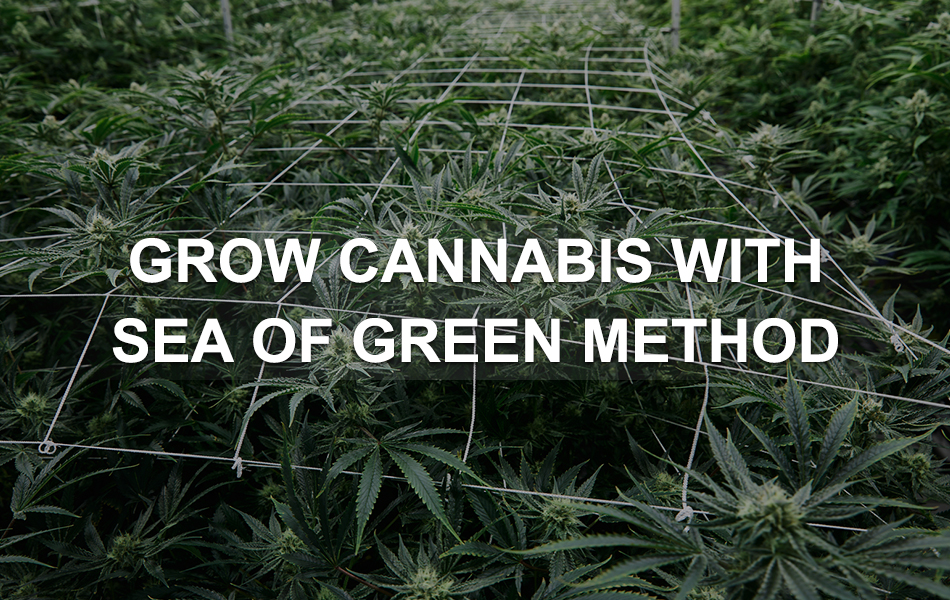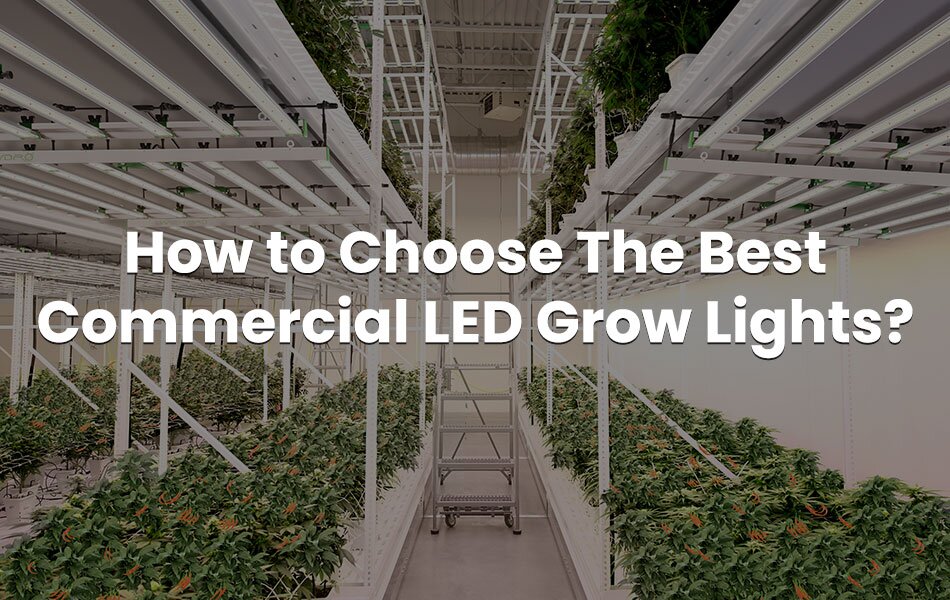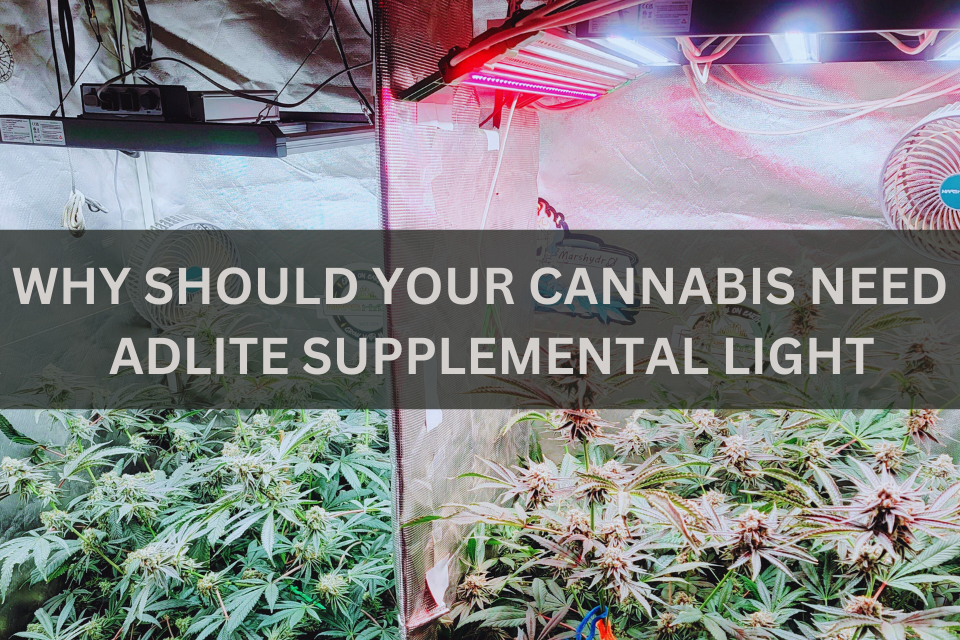
Grow Cannabis with Sea of Green(SoG) Method
April 14, 2023
Choosing the Best Commercial LED Grow Lights: Key Factors to Consider
June 7, 2023Cannabis cultivation has become a popular hobby and industry around the world. Growing cannabis plants involves careful attention and proper timing in order to yield high-quality buds. One crucial aspect of the growing process is knowing when to harvest the cannabis plants. Harvesting too early or too late can greatly affect the potency, flavor, and overall quality of the final product. In this article, we will discuss the various factors to consider when deciding when to harvest cannabis plants, including the plant’s physical appearance, trichome development, and other environmental conditions.
When Is The Best Time to Harvest Cannabis?
Harvesting cannabis at the right time is crucial for achieving the best possible results in terms of potency, flavor, and overall quality. The ideal time to harvest most cannabis plants varies depending on several factors such as trichome development, appearance, strain, environment, and personal preference.
Trichome Development: Trichomes are the small, resinous glands that develop on the surface of the cannabis flowers and leaves. They contain the active compounds, including THC and CBD, that give cannabis plant its medicinal and psychoactive effects. The best time to harvest cannabis is when the trichomes have turned from clear to cloudy or amber in color. This is an indication that the cannabinoids have reached their peak levels and are ready for harvesting. A jeweler’s loupe or a microscope can be used to examine the trichomes and determine their color and readiness for harvest.

Appearance: Appearance is another factor to consider when deciding on the best time to harvest cannabis plants. As the plant matures, the leaves will start to yellow and die off, and the pistils (hairs) on the cannabis buds will change from white to reddish-brown. When approximately 70-90% of the pistils have turned brown, the plant is typically ready for harvest. However, the appearance of the plant should not be relied upon solely for determining the optimal harvest time, as the trichome development is a more accurate indicator of readiness.

Strains: The strain of indoor cannabis plants being grown also plays a significant role in determining the best time to harvest weed. Different strains have different flowering times, so it’s important to research the specific strain being grown to determine the best time to harvest. Indica strains generally have a shorter cannabis flowering stage and are ready for harvest sooner than sativa strains, which typically have a longer flowering stage.

Environmental Conditions: Environmental factors such as temperature, humidity, and lighting can also impact the timing of the harvest. Cooler temperatures and lower humidity levels can slow down the growth and maturity of the plant, while higher temperatures and humidity levels can speed up the process. Growers should maintain the ideal environmental conditions for their plants to ensure optimal growth and maturity.
Personal Preference: Finally, personal preference can also be a factor in determining the best time to harvest cannabis plants. Some growers prefer to harvest when the trichomes are at their peak potency, while others may prefer to harvest earlier or later depending on their desired flavor or aroma profile.
In conclusion, the best time to harvest marijuana plants depends on several factors, including trichome development, appearance, strain, environment, and personal preference. By considering these factors, growers can determine the optimal harvest time for their plants and achieve the desired potency, flavor, and overall quality of the final product.
What Happens If You Harvest Cannabis Too Late?

If cannabis plant is harvested too late, it can have several negative consequences on the final product. The most significant effect is a decrease in potency due to the breakdown of THC into CBN (cannabinol). CBN is a compound that is less psychoactive and less potent than THC, which means that the harvested cannabis plants will have a weaker effect.
Another consequence of harvesting cannabis too late is a loss of flavor and aroma. As the plant ages, the terpenes that give cannabis its distinct smell and taste can degrade or evaporate, resulting in a less flavorful and less aromatic product. This can be particularly problematic for strains that are known for their unique and desirable flavor profiles.
Additionally, if the plant is left to mature for too long, the cannabis buds can become overripe and lose their density, making them less desirable and more difficult to handle. Overripe cannabis buds can also be more susceptible to mold and mildew, which can compromise the quality of the final product.
Finally, leaving cannabis plant to mature for too long can also have economic consequences. The longer the plants are left to mature, the more resources (e.g., water, electricity) are required to sustain them, which can increase the cost of production. Additionally, a decrease in potency and quality can lead to lower prices and reduced demand for the harvested cannabis plants.
What Happens If You Harvest Cannabis Plant Too Early?

Harvesting cannabis too early can also have negative consequences on the final product. If the plant is harvested before it has had a chance to fully mature, it can result in a decrease in potency, flavor, and aroma.
When cannabis plant is harvested too early, the trichomes may not have fully developed, which means that the levels of THC and other cannabinoids may be lower than desired. This can result in a weaker and less psychoactive product that may not produce the desired effects.
In addition to a decrease in potency, harvesting marijuana plants too early can also result in a lack of flavor and aroma. The terpenes that give cannabis its distinct smell and taste develop later in the plant’s life cycle. If the plant is harvested too early, these terpenes may not have fully developed, resulting in a less flavorful and less aromatic product.
Another consequence of harvesting marijuana plants too early is a decrease in yield. When plants are harvested too early, the cannabis buds may not have had a chance to fully develop, resulting in smaller and less dense buds. This can lead to a lower overall yield, which can be particularly problematic for commercial growers who rely on a high yield to maximize their profits.
Finally, harvesting cannabis too early can also have economic consequences. If the product is weaker, less flavorful, and less aromatic, it may be worth less on the market, resulting in lower prices and reduced demand.
Some Cannabis Harvesting Methods:
The “clear” method: This involves harvesting the buds when the trichomes on the plant are clear and transparent. This method is best for those who prefer a more energizing and cerebral effect.
The “milky” method: This involves harvesting the buds when the trichomes on the plant are milky white in color. This method is best for those who prefer a more balanced effect.
The “amber” method: This involves harvesting the buds when the cannabis trichomes on the plant are mostly amber in color. This method is best for those who prefer a more sedative and relaxing effect.
The “flush” method: This involves flushing the plant with water for several days before harvesting to remove any remaining nutrients and minerals from the plant. This can result in a smoother smoke and a cleaner taste.
The “dry trim” method: This involves trimming the buds immediately after harvesting and drying cannabis buds before curing. This method can be quicker and easier than wet trimming, but it can also result in a harsher smoke and a less desirable flavor.
The “wet trim” method: This involves trimming buds immediately after harvesting while they are still moist. This can result in a smoother smoke and a more desirable flavor, but it can also be more time-consuming and difficult.
Final Thoughts
In summary, harvesting cannabis is a critical step in the cultivation process that requires careful attention and consideration. By harvesting at the optimal time and using the right techniques, growers can ensure that their cannabis is of the highest quality and potency.




